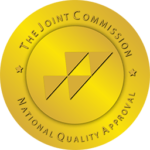The crocodile drug, or “krokodil,” represents a dire warning about the depths of addiction and the lengths to which individuals will go to attain a high. This synthetic opioid, known for its catastrophic effects on the human body, symbolizes a public health crisis where awareness and education are not just beneficial but essential. Understanding its nature, effects, and the challenges in treating addiction to this substance is crucial for both healthcare providers and the wider community.
What is the Crocodile Drug?
Krokodil is the street name for desomorphine, a derivative of morphine with a significantly higher potency and rapid onset of action. Unlike morphine, however, krokodil is often synthesized from codeine in makeshift labs using highly toxic ingredients, which result in a substance that is both inexpensive and extremely dangerous. Its rapid onset and the brief duration of its euphoric effects compel users to frequent, repeated doses, leading to aggressive physical and psychological dependency.
How is Crocodile Made?
The process of making krokodil is alarmingly rudimentary and hazardous. It involves mixing codeine tablets with solvents like gasoline, paint thinner, or hydrochloric acid. This concoction is then cooked to synthesize desomorphine, leaving behind various toxic residues in the final product. Given the impurities and the acidic nature of the solvents used, the drug is incredibly corrosive to the body.
Physical Effects of Crocodile Drug
The physical effects of krokodil are notorious, with users often experiencing severe damage to the skin and soft tissues, leading to scaly, green, festering sores that resemble crocodile skin. Long-term use can cause more severe damage such as deep tissue infections, gangrene, and ultimately, the need for limb amputation. The drug’s acidity and impurities can also cause significant damage to the veins and internal organs, leading to life-threatening complications.
Psychological Effects of Crocodile Drug
Krokodil usage leads to severe mental health issues. The high from krokodil is short-lived, which can lead to repeated injections and an increasingly unstable psychological state. Users often exhibit symptoms such as depression, anxiety, severe mood swings, and psychosis. Over time, the neurotoxic effects of the chemicals used in the drug’s production can lead to irreversible cognitive impairments.
Why is it Called the Crocodile Drug?
The nickname “crocodile” comes from the ghastly effects the drug has on the user’s skin, particularly around the injection sites. The skin turns rough and scaly, resembling that of a crocodile, often developing into grotesque wounds that expose underlying bone or muscle.
Global Impact and Prevalence
While most prevalent in Russia and some parts of Eastern Europe, krokodil has also been reported in other regions, including Western Europe and the United States. Its prevalence is closely tied to heroin markets, often appearing when heroin becomes too expensive or difficult to obtain. The global impact is significant, as the morbidity associated with its use strains healthcare resources and social services.
Treatment for Krokodil Addiction
Treating addiction to krokodil is particularly challenging due to the severe physical and mental health issues it causes. Effective treatment approaches combine detoxification, often requiring intensive medical care, with long-term rehabilitation programs. These programs focus on both the physical health of the addict and their psychological recovery, including therapy for mental health issues and support in rebuilding a life free from substance abuse.
Role of Rehabilitation Centers
Rehabilitation centers are crucial in the fight against krokodil addiction. They provide a structured environment where individuals can detox under medical supervision and engage in comprehensive therapy programs that address both the psychological and physical aspects of addiction. The centers also offer support groups and aftercare programs to help former users avoid relapse.
The Social Impact of Crocodile Drug
The impact of krokodil extends beyond individual users, affecting families, communities, and society at large. The drug’s devastating effects can lead to social isolation, economic burden, and increased crime rates. Families often face significant emotional and financial strain, and communities may see a rise in healthcare costs and a decrease in public safety.
Overcome Addiction at True Self Recovery
The challenge posed by the crocodile drug is immense, requiring a coordinated response from public health officials, law enforcement, medical professionals, and educators. By increasing awareness and understanding of the drug, enhancing treatment strategies, and supporting prevention measures, we can mitigate the damage caused by this destructive substance.
If you or a loved one are struggling with a substance use disorder, get in touch with True Self Recovery. Our team facility is dedicated to helping individuals overcome the challenges of addiction through our comprehensive substance abuse treatment programs.
FAQs
What exactly is the crocodile drug made of?
The crocodile drug, or krokodil, is primarily made from codeine, mixed with highly toxic chemicals like gasoline, paint thinner, and hydrochloric acid. This combination is used to synthesize desomorphine, the active ingredient in krokodil.
How quickly can someone become addicted to krokodil?
Addiction to krokodil can develop very quickly due to its potent effects and the short duration of its high, often leading users to frequent and repeated use to sustain the euphoria and stave off painful withdrawal symptoms.
What are the treatment options for someone addicted to the crocodile drug?
Treatment options include detoxification under medical supervision, inpatient rehabilitation programs, psychological counseling, and ongoing support groups. Given the severe physical damage caused by the drug, treatment often also involves managing and treating these physical effects.
How does krokodil affect the community at large?
Krokodil affects communities by increasing healthcare and law enforcement costs, decreasing public safety, and straining social services. It also leads to economic loss through decreased productivity and long-term disability among users.
What can I do to help someone I suspect is using krokodil?
If you suspect someone is using krokodil, encourage them to seek professional medical help immediately. Supporting them in finding a rehabilitation center and staying involved through their treatment can also be crucial to their recovery.



